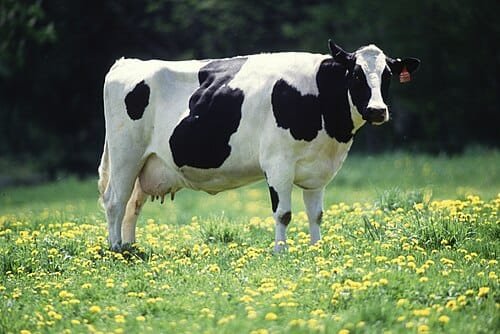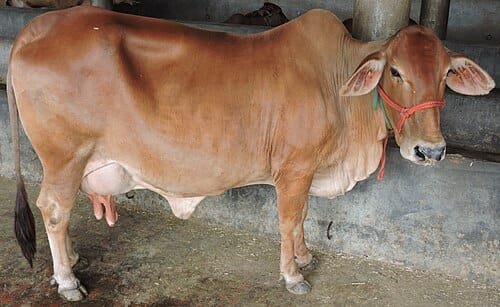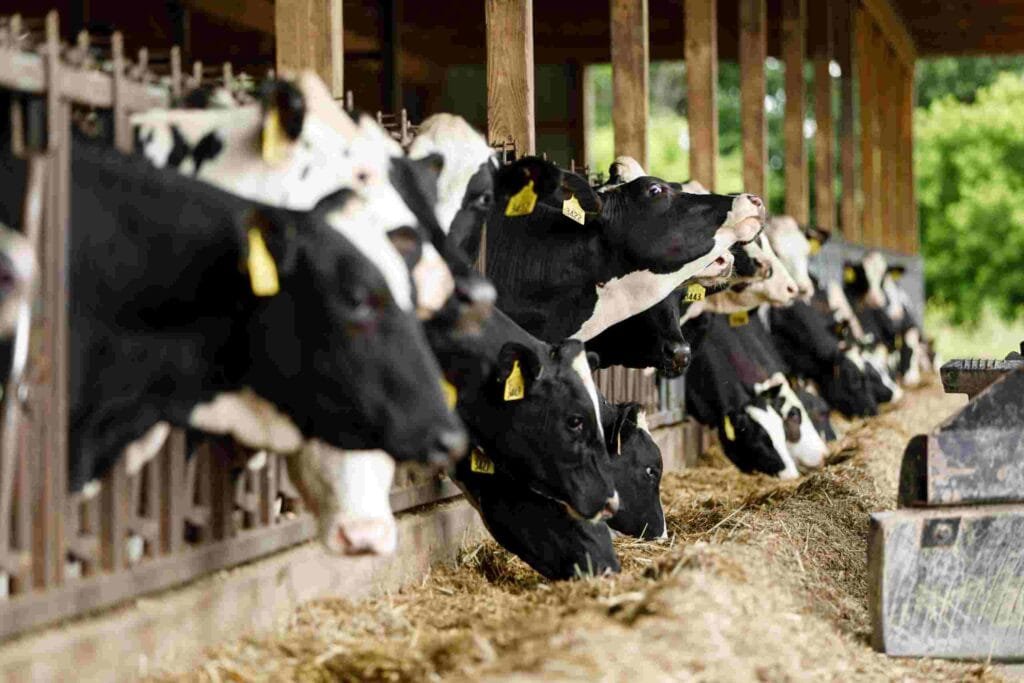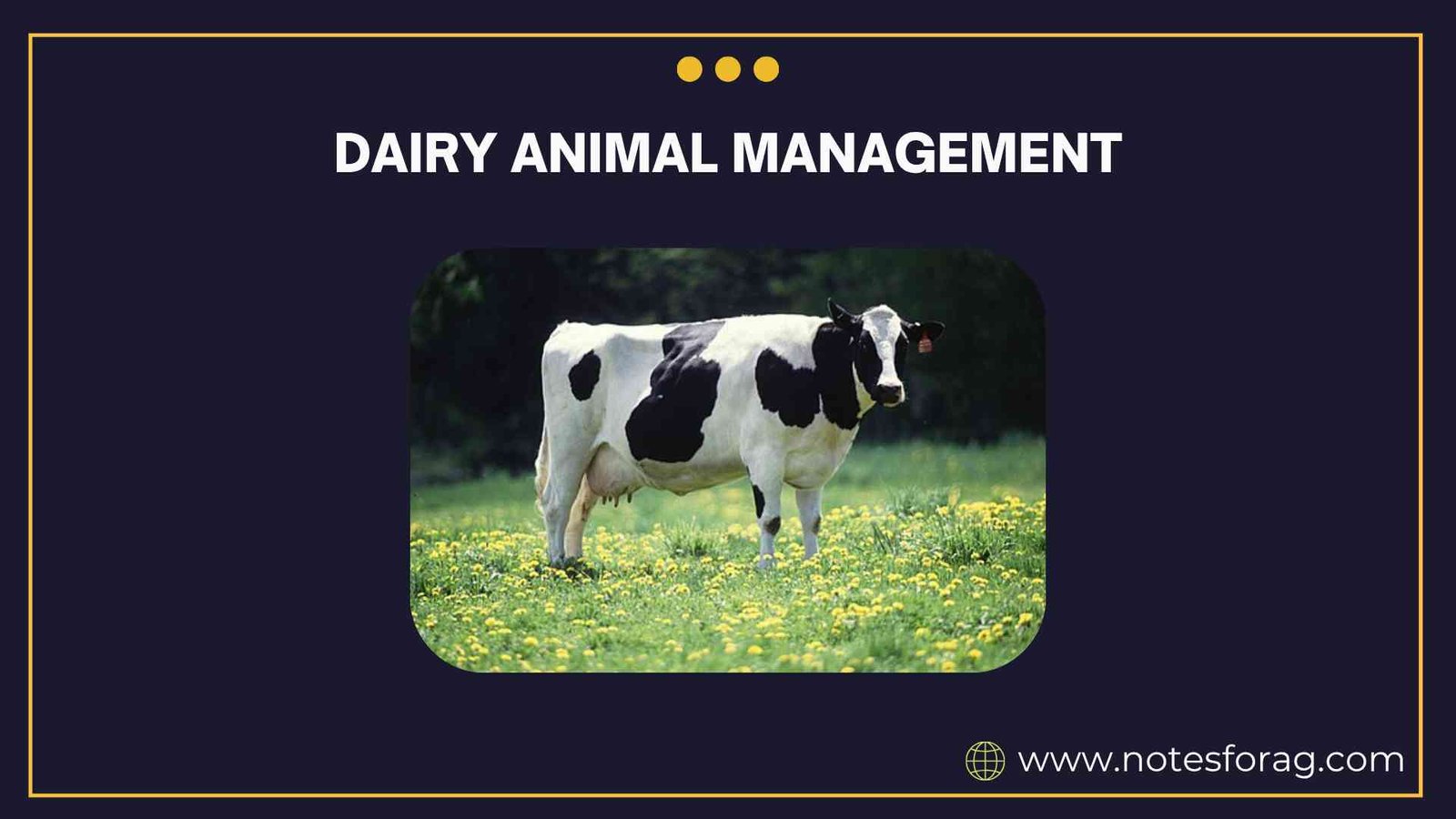1. Introduction

Dairy animal management refers to the scientific and effective handling of dairy animals such as cows and buffaloes to ensure optimal milk production, health, and reproduction. It involves a range of practices including housing, feeding, health care, milking, and breeding. Proper management ensures economic productivity and animal welfare, making it essential for sustainable dairy farming.
Summary of Dairy Animals Management
- Dairy animal management involves selecting healthy breeds, providing proper housing, balanced nutrition, healthcare, milking hygiene, and reproduction practices to ensure optimal milk production, animal welfare, and farm profitability.
- Key aspects include well-ventilated housing, a balanced diet with clean water, routine veterinary checks, hygienic milking, and accurate record keeping, all of which support herd health and productivity.
- Sustainable herd practices such as proper calf care, biosecurity, manure management, and modern techniques like total mixed rations and precision livestock farming help enhance efficiency, reduce costs, and improve long-term sustainability.
Table of Contents
2. Selection of Dairy Animals
1. Criteria for Selection
Animals should be selected based on their breed characteristics, milk yield, physical appearance, and adaptability to the local environment. They must be healthy, disease-free, and have a well-formed udder and teats.
2. Preferred Breeds

High-yielding breeds like Holstein Friesian, Jersey, and Sahiwal are preferred. Local breeds with good adaptability are also encouraged depending on the regional climate and resources.
3. Housing and Shelter Management for Dairy Animals
1. Housing Design
Proper housing ensures comfort and reduces stress. The shelter should be well-ventilated, dry, clean, and spacious enough to allow free movement.
2. Hygiene and Sanitation
Regular cleaning and disinfection of the shelter prevent the spread of infections. Waste management and proper drainage systems are crucial.
3. Protection from Weather
Shelters must provide protection against heat, cold, and rain. Roofing, insulation, and proper bedding material help maintain a comfortable environment.
4. Feeding and Nutrition for Dairy Animals

1. Balanced Diet
Dairy animals require a balanced mix of carbohydrates, proteins, fats, vitamins, and minerals. Green fodder, dry fodder, and concentrates are commonly used.
2. Water Supply
Clean and sufficient water is necessary for digestion, milk production, and general health. An adult cow may need 50-80 liters per day.
3. Feeding Schedule
Regular feeding at fixed intervals improves digestion and productivity. Overfeeding or underfeeding should be avoided.
5. Health and Disease Management
1. Routine Checkups
Regular veterinary checkups help in early disease detection and timely treatment.
2. Vaccination and Deworming
Vaccinations against common diseases like FMD, BQ, and HS are essential. Deworming controls internal parasites.
3. First Aid and Emergency Care
Farmers should be trained in basic first aid and emergency handling techniques.
6. Breeding and Reproduction Management
1. Breeding Methods
Natural mating and artificial insemination (AI) are the two common methods. AI is preferred for genetic improvement and disease control.
2. Heat Detection
Timely detection of estrus signs ensures successful breeding. Behavioral changes like restlessness, mounting, and mucus discharge are key indicators.
3. Pregnancy and Calving Care
Pregnant animals need special attention in terms of feeding, housing, and handling. Proper assistance during calving ensures the safety of both cow and calf.
7. Milking Management
1. Milking Techniques
Milking should be done gently, hygienically, and at regular intervals. Hand milking and machine milking are commonly used.
2. Cleanliness During Milking
Clean hands, udder, and equipment prevent contamination and mastitis.
3. Milk Storage and Handling
Milk should be stored in clean, cool containers and transported quickly to prevent spoilage.
8. Record Keeping and Economics
1. Production Records
Maintaining records of milk yield, breeding dates, health treatments, and expenses helps in better decision-making.
2. Cost and Profit Analysis
Tracking input costs and milk sale revenue allows farmers to assess profitability and make improvements.
3. Marketing of Milk
Effective marketing strategies including direct selling, cooperatives, and milk collection centers help farmers get fair prices.
9. Calf Rearing and Management
1. Colostrum Feeding
Feeding colostrum within the first 2-3 hours after birth boosts immunity in calves.
2. Housing and Hygiene
Calves need clean, warm, and dry housing. Bedding should be changed regularly.
3. Nutrition and Growth Monitoring
Balanced feeding, vaccinations, and weight monitoring are essential for healthy growth.
10. Conclusion
Effective dairy animal management is the backbone of a successful dairy farm. It encompasses careful animal selection, proper housing, balanced feeding, routine healthcare, scientific breeding, and efficient milking practices. By following these best practices, farmers can improve milk yield, ensure animal health, and achieve economic sustainability. Adopting modern technologies and training also empowers farmers to manage their herds efficiently and contribute to the growth of the dairy industry.
Frequently Asked Questions (FAQs)
How much water does a dairy cow need daily?
A dairy cow needs a lot of water every day to stay healthy and produce milk. On average, an adult cow drinks 50 to 80 liters of clean water daily, but this can increase on hot days or when the cow is producing more milk. Clean and fresh water helps with digestion, body cooling, and milk production. Without enough water, cows can become dehydrated, eat less, and produce less milk.
What is total mixed ration (TMR) feeding?
TMR stands for Total Mixed Ration, which means all the cow’s food grass, grains, protein, vitamins, and minerals are mixed together into one balanced meal. This method ensures that cows eat the right amount of each nutrient in every bite. TMR helps improve digestion, milk yield, and reduces feed waste, making it easier to manage large herds with consistent nutrition.
Why is calf colostrum important?
Colostrum is the first milk a mother cow gives after giving birth. It is thick, yellowish, and full of antibodies that help protect the newborn calf from infections and diseases. Giving colostrum within the first 1–2 hours of birth is very important because the calf’s stomach can absorb these protective nutrients only during this early period. It helps the calf grow stronger and stay healthy.
How often should dairy cows be vaccinated and dewormed?
Dairy cows need to be vaccinated and dewormed regularly to keep them healthy. Vaccines protect them from serious diseases like Foot and Mouth Disease (FMD), Black Quarter (BQ), and Hemorrhagic Septicemia (HS). Deworming is done to remove internal parasites that affect digestion and weight. Usually, cows are dewormed every 3–6 months, and vaccination schedules depend on the disease and local guidelines. A vet should always guide the proper health schedule.
Related Articles

